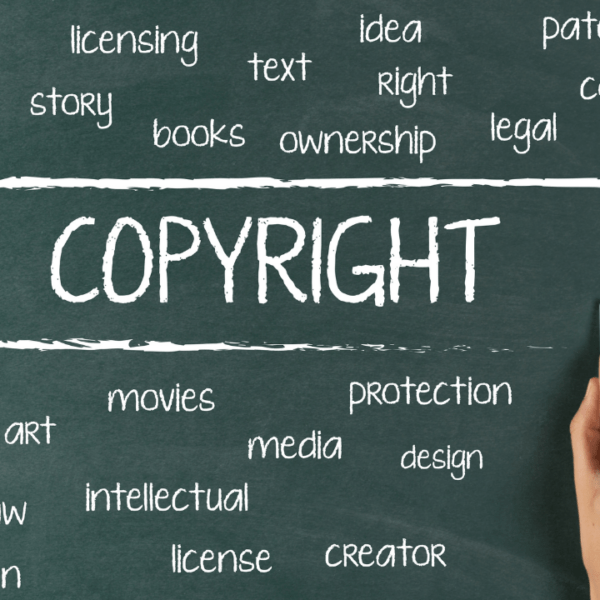The B2B buying process is changing as consumers become savvier. Many are looking for the right B2B marketplace. B2B buyers also expect a similar experience when they shop online, whether shopping as an individual or on behalf of their company. Still, there are some differences that sellers need to be aware of.
Table of Contents
B2B eCommerce is growing faster than ever before
In 2018, B2C eCommerce accounted for about $4 trillion in sales. That’s a lot of business. However, according to McKinsey, the growth of B2B eCommerce is even faster than that of B2C. The consulting firm predicts that by 2022, B2B eCommerce will reach $5 trillion—a nearly 50% increase in just six years.
As you might imagine, this rapid growth has everything to do with digital technologies and the rise of digital channels like social media and mobile apps. With these tools at their disposal, buyers can easily compare products from different vendors to find what they need at the lowest possible cost before deciding on what to purchase and where (and when) they want it delivered.
This can be especially beneficial if your organization needs specific resources quickly or wants them delivered across town instead of shipping them elsewhere across the country (or the globe).
The B2C experience has set expectations for the B2B buyer.
The B2B buying experience is different from the B2C buying process. In fact, there are some key differences that sellers should be aware of, especially regarding how buyers interact with your brand.
First of all, a B2B buyer will expect the same level of service and attention as a B2C shopper would expect—and that includes information about your products and services in an easily accessible location on your website (such as product descriptions and videos).
However, unlike a typical B2C customer who might visit one or two websites before deciding what to purchase as individuals, companies tend to be much more selective when making purchases for themselves or their business. This means that when companies do go online for research purposes, they’re doing so with specific needs in mind—sellers need to have those needs met before someone considers them.
There are fewer touchpoints in the B2B sales process, but they’re longer and have higher intensity
One of the most important things sellers and buyers should be aware of when negotiating a B2B sale is that there are fewer touchpoints in the sales process than in B2C. This means that you’ll have fewer opportunities to talk with potential clients, but they will have more extended and intense conversations.
In addition to this, many of your business’ competitors are likely going to be larger companies with more resources at their disposal than yours. Suppose you’re trying to get hired by one of these firms. In that case, chances are good that your pitch will go through multiple people before it reaches someone who can make decisions about hiring you—and even then, this person may not have any authority over hiring decisions (or even know who does).
How does technology impact the B2B buying process?
The B2B buyer’s journey has been impacted by technology in several ways. These include:
- The way they shop: Nowadays, buyers are more likely to research products online before making a purchase decision, which means that the buying process is often done independently of salespeople. This is why it’s so crucial for companies to have a robust online presence—an optimized website and social media presence help build trust with potential customers and allow them to gather information about your business before reaching out via phone or email.
- The way sellers cater to these buyers: Because B2B sales are increasingly being conducted online rather than offline in person, businesses must make sure their websites provide an up-to-date picture of what they offer today (as well as plans) so customers can quickly learn about their offerings without having to ask questions first hand.
The purchase cycle can take months and involve multiple stakeholders, especially in the early stages.
The purchase cycle is more complex when buying B2B. The process takes longer because more people are involved, and the decision requires stakeholder collaboration.
Buyers also need to be able to touch and feel what they’re buying before they make a purchase (in B2B).
Providing relevant technical information on your website is critical because buyers will turn to it for data as they consider their options.
Technical information is critical for B2B buyers. Providing relevant technical information on your website is crucial because buyers will turn to it for data as they consider their options.
Provide images and specs, pricing and terms (like delivery timelines) so customers can easily compare products and make informed buying decisions.
Give users the ability to self-serve by presenting rich product information through a catalog or search tool, so they don’t have to contact you with every question about a product or service.
A B2B portal is a great way to connect more deeply with your existing customers and partners.
A B2B portal is a great way to connect more deeply with your existing customers and partners. You can increase customer loyalty and revenue by providing them access to the information they need. A B2B portal allows you to communicate with your customers directly, helping you build trust and improve brand awareness.
It’s vital to offer a self-serve experience for buyers because of their high level of digital engagement.
It’s essential to offer a self-serve experience for buyers because of their high level of digital engagement. B2B buyers are more comfortable with self-serve than they used to be and are more likely to buy if they don’t have to talk to a salesperson.
Additionally, today’s buyers want to be able to research on their terms and in the way that best fits their schedule and preferences—not at the whims of sellers’ operating hours or product catalogs.
Self-service also allows sellers more control over how much effort goes into selling each product during various stages throughout the process; some companies will even use it as an opportunity for upselling by offering additional services or accessories that might not have been part of initial offerings (e.g., maintenance plans).
Today’s B2B buyers want access to rich product information, including images, specs, pricing, and terms.
Today’s B2B buyers want access to rich product information, including images, specs, pricing, and terms. They are also looking for products tested by third parties and won awards.
This is why today’s leading eCommerce sites are providing this kind of information in an easy-to-use format on their sites. It allows buyers to make more informed purchasing decisions while they compare products side by side on desktop or mobile devices.
How eCommerce improves the B2B buying process
- When you buy an item from a store, you can’t compare it to other items without leaving the store.
- If you want information about a product, you have to call the manufacturer or visit their website.
- Finding what you need in stores can be difficult because so many products are on display, and most look similar.
- Getting a quote is slow because it involves filling out forms by hand and waiting for a response via fax or email (or snail mail).
Buyers expect a similar experience when they shop online, whether shopping as an individual or on behalf of their company.
At one time, the online buying experience was very different for B2B and B2C customers. The B2C customer might have been shopping from a laptop at home or their phone on the commute.
For example, if you’re buying something for yourself on Amazon, you might start by browsing through what’s available and reading reviews to find out which are best suited to your needs. As you narrow down your options, you may check prices at other online stores before deciding which product is best for you.
On the other hand, when someone shops on behalf of their company rather than themselves (known as Business-To-Business or “B2B”), they usually don’t get to shop around as freely in terms of price because they’re not expected to pay the total price themselves; they’re working on behalf of their company, so they’re looking for convenience and value rather than necessarily getting the cheapest option possible.
Suppose sellers want to attract these buyers into their store (and keep them coming back). In that case, they’ll need an understanding of how this process differs from traditional eCommerce practices like those used in consumer purchases like retail shopping or travel booking sites where customers go through their own browsing experiences before getting ready to make purchases themselves once prepared.
In summary
If you’re selling to companies, your website should be easy for buyers to use and offer rich product content accessible from anywhere. You can also connect with your customers through a B2B portal or by providing them with another way to engage with you, like email newsletters or social media. Ultimately, it all comes down to serving your customer’s needs and making it as easy as possible for them to buy from you.

I am a passionate, adventurous, and insatiate learner who loves to write about the latest technology trends. My experience working in an MNC has motivated me to understand that there are certain niche requirements for writing strategically about brands’ messages towards people’s interests which I’ve mastered over time through trial and error of many projects under various clients across diverse industries. It is my honest effort to put my experiences and knowledge of industry towards readers.




